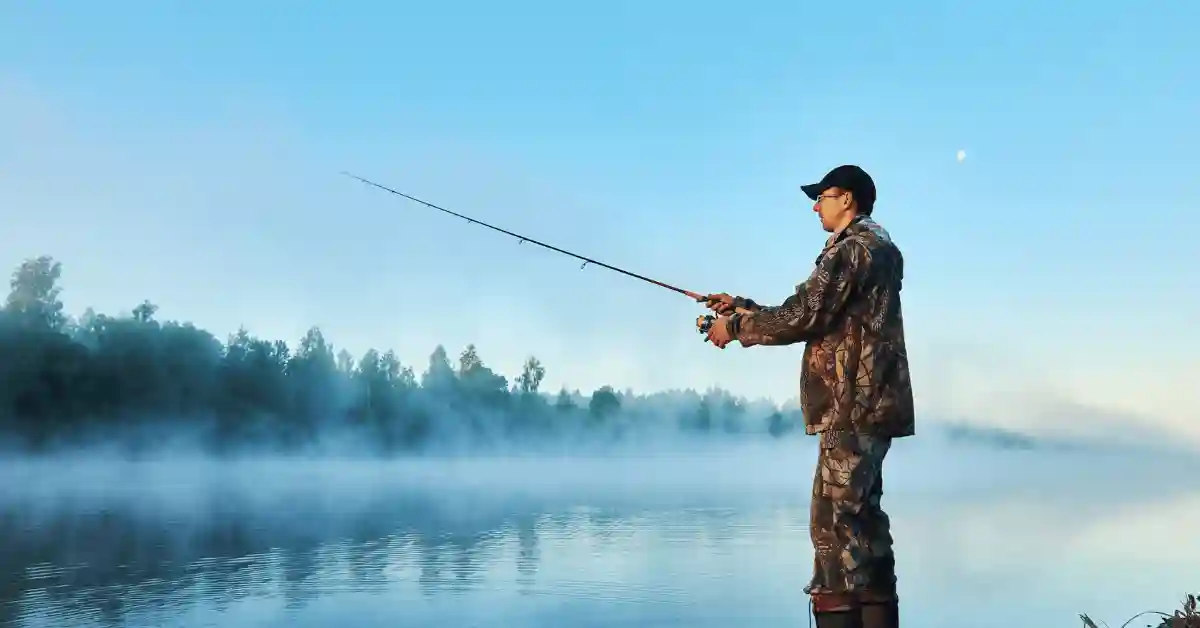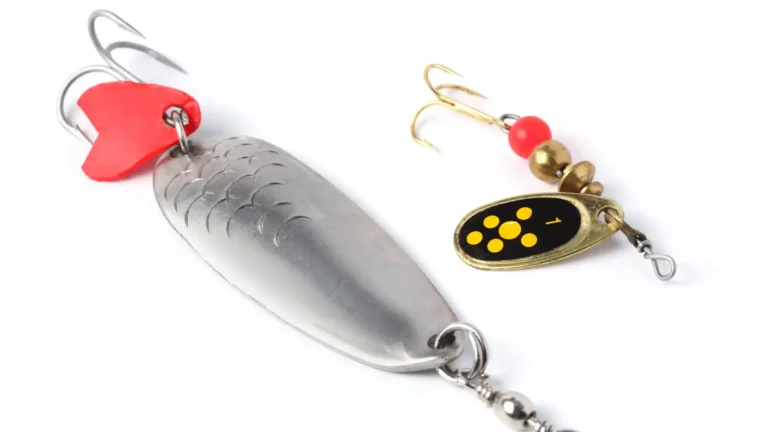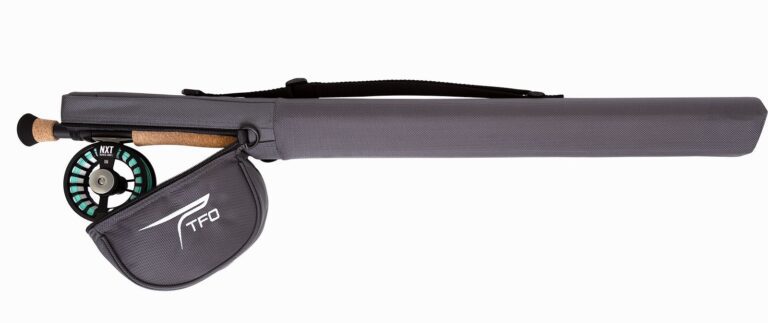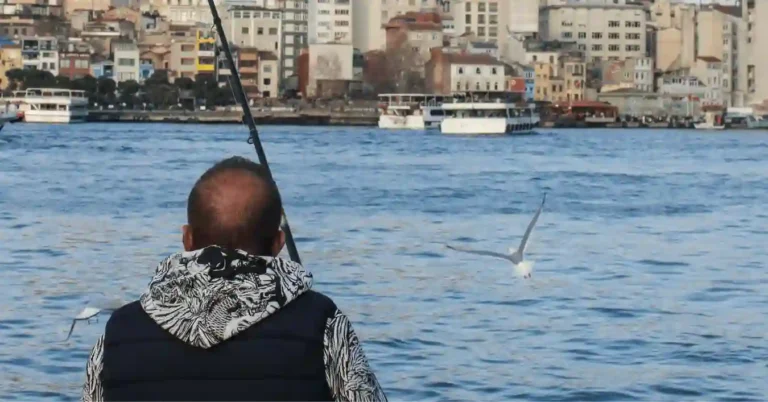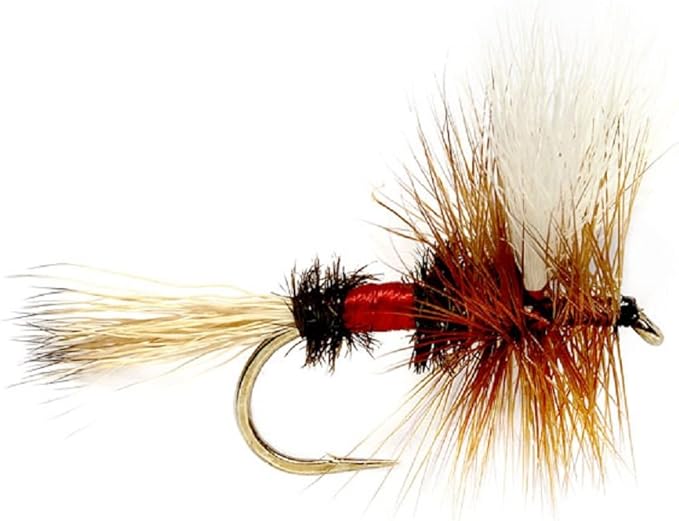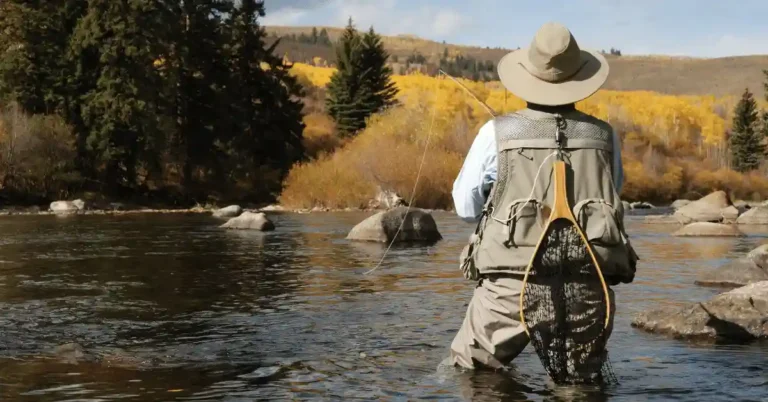Can You Really Fly Fish in a Pond? Tips & Techniques
Can You Really Fly Fish in a Pond? Tips & Techniques
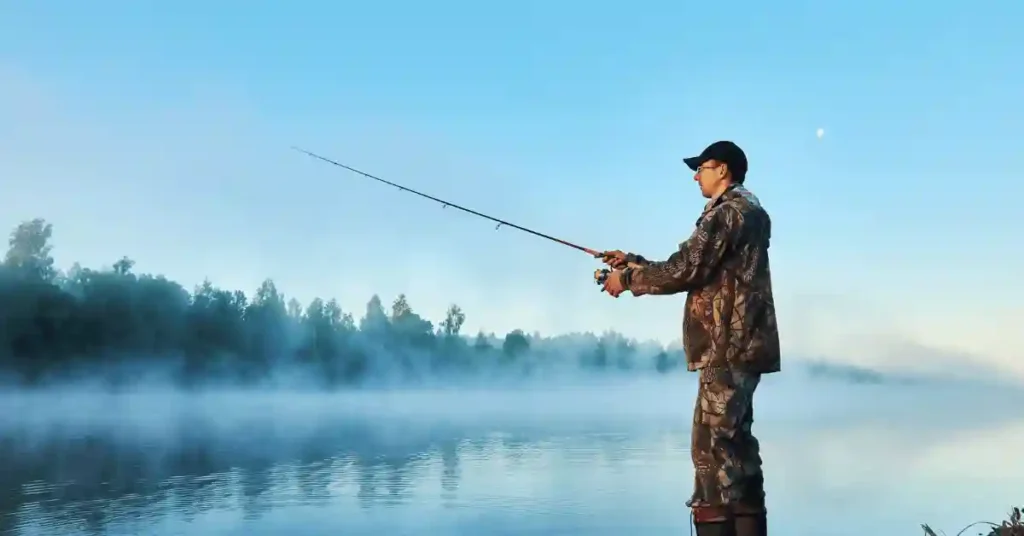
Imagine you’ve just watched a fly fishing documentary, movie, video or can’t get enough of your friend’s fly-fishing tales. Moreover, fly fishing seems like a fantastic hobby, and you’re excited to learn the art.
But, there’s a hitch – your local area lacks fishing spots. No rivers or gold medal waters, just ponds and lakes. Can you still enjoy fly fishing in a pond?
Yes! You can fly fish in ponds, lakes, and other bodies of water, just like you would with regular fishing. While fly fishing in a pond is different from doing it in a river, there are many similar techniques and tools. Let’s explore fly fishing in a pond and how to catch big fish wherever you’re fishing.
What Is a Pond?
A pond is a small body of still water, either natural or made by people. It’s usually shallow and often surrounded by plants. Ponds are different from bigger water bodies like lakes because they’re smaller and hold less water.
Ponds are like their own little ecosystems, especially in cities. They often have enough Dissolved Oxygen (DO) either from plants or a system that adds air. Because they’re self-contained, ponds become homes for fish, such as carp and bass, that can grow to be quite big.
Ponds, usually 5 to 20 feet deep, can come from old mining operations and might have different mineral bottoms. The main difference between ponds and lakes is how deep they are. Lakes have different life zones based on depth, but ponds usually don’t.
Ponds are mostly shallow, with one life zone called the Photic Zone. This means sunlight can reach the bottom, helping lots of plants grow. This creates a good spot for baitfish to hide, attracting bigger fish looking for food. Ponds being shallower also means that on windy days, the waves are smaller compared to lakes.
How to Fly Fish in a Pond
Before you start fly fishing in a pond, just observe the pond for a few minutes. Look for moving or feeding fish, bugs falling into the water, and optimal casting spots. Develop a plan rather than casting right away. Avoid bringing a dog, as it might spook the fish. If you spot an otter, find another pond, as they can disrupt your fishing.
Be mindful of your movements to avoid unnecessary noise. Stillwater fishing demands careful casting and wading due to the heightened visibility of surface disturbances. The following are the steps techniques on how to fly fish in a pond:
Sight-Fishing
Pond fishing offers the unique experience of sight-fishing. When using dry flies, cast and let your fly sit motionless for a few seconds. Resist the urge to give it too much action; long pauses can trigger strikes.
Larger prey items work well for pond fish. Terrestrial flies resembling ants, spiders, and caterpillars attract the attention of voracious fish.
Setting the Hook
Be ready to set the hook quickly, as pond fish are just as intelligent as those in rivers. Fish tend to spit out the fly within a second if they realize it’s not an insect.
Resting the Pond
Similar to other fishing environments, it’s essential to let the fish rest occasionally. Small ponds benefit more from occasional breaks, allowing fish to recover from disturbances.
Timing Matters
The most productive times for fly fishing in a pond are early morning, late afternoon, or early evening. While you can catch fish in the midday sun, your best odds are during these peak times.
Clever Strategies for Largemouth Bass
Largemouth bass, known for prowling shorelines, exhibit interest in minnows, frogs, and other prey items. Surprisingly, less action on the fly often leads to more successful bass hook-ups.
Observing natural movement patterns and adjusting fly action accordingly results in improved bass catches.
Terrestrial Flies and Matching the Hatch
Larger flies resembling ants, spiders, and caterpillars, known as terrestrial flies, work well in ponds. They attract the attention of voracious fish.
Matching the hatch principle applies to ponds too. The author shares an instance where Griffith’s gnat fly, typically used for midges, successfully imitated a hairy caterpillar, leading to multiple sunfish catches.
Pond Ecology Insights
Sunfish in ponds are voracious feeders, surprising anglers with their ability to consume larger prey items.
An attempt to stock a pond with rainbow trout using trout fry resulted in sunfish devouring the fry, highlighting the aggressive nature of pond fish.
Predatory Encounters
When hooking into smaller fish like sunfish, be cautious of larger predatory fish. An amusing story recounts a largemouth bass snatching a sunfish and engaging in a brief struggle before the sunfish flew out of its mouth.
Setting the Hook and Fish Resting Periods
Fish in ponds are intelligent and require a quick hook setting. They often spit out the fly within a second if they realize it’s not an insect.
Similar to other fishing environments, allowing fish to rest is essential. Small ponds benefit more from occasional breaks, where fish spook less and resume actively feeding.
Fly Fishing in a Pond Vs River
Let’s talk about the difference between fly fishing in a pond and river. Fish don’t care if you’re using a spinning reel or a fly line – if it looks like food, they’ll go for it. Fly fishing is commonly done in rivers and streams because the fish there are easily spooked.
The presentation and near invisibility of a fly line are crucial for catching trout and other river species. If you could catch the same fish with a spinning reel, more people might opt for it instead of a fly line.
Ponds, on the other hand, can hold species found in rivers like rainbow trout, but most North American ponds have their own types of fish, such as bass, bream, and crappie. These pond fish are usually bolder and more aggressive than their river counterparts, so you can use a spinning reel without scaring them away.
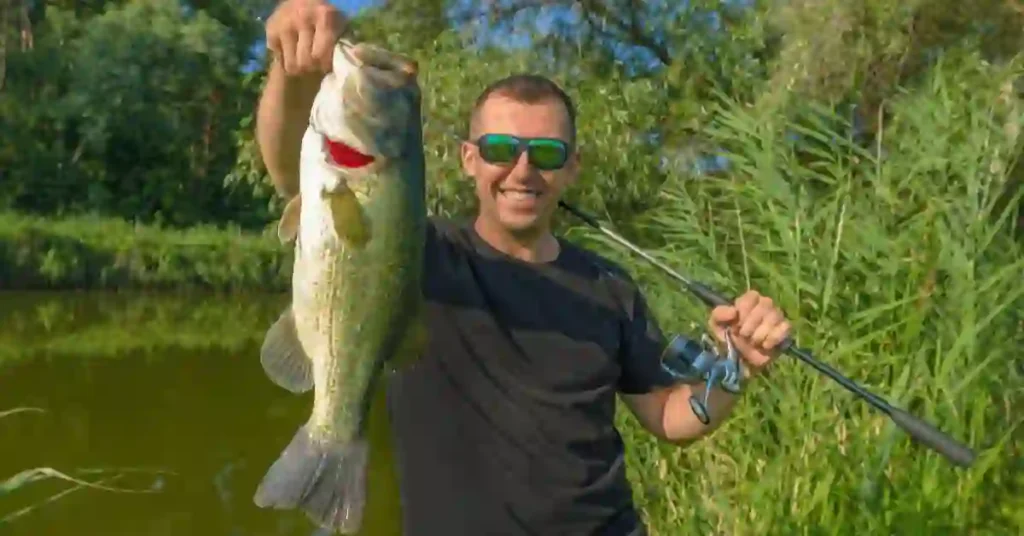
Fly fishing in a pond is not only acceptable, but it can also be quite successful. You might even catch older and smarter fish that would avoid a traditional line but can’t resist your fly. Whether you’re fishing for bass in the shallows or targeting crappie near a boathouse, your fly line can be effective.
Don’t worry, fly fishers, you can still match the hatch when you’re fly fishing in a pond. While pond species might not be as attuned to the hatch as river species, they recognize common insects and are likely to strike flies resembling their natural diet. Even if you can’t see the fish like in a river, they’ll see your fly as a tasty meal. Also, fly fishing have a long history.
You might even have a more productive day fishing with a fly line compared to someone with traditional gear, thanks to the minimal profile of a fly line. But, fly fishing is easy to learn.
Pond Fly Fishing Gear
When you’re fly fishing in ponds, you don’t need heavy gear, but it should be strong enough for bigger fish. A three or four-weight fly rod with matching weight fly line is good, and a five-weight works too. Since you’re often fishing near the shore, long casts are rare.
Fly reels aren’t a must for pond fishing, except for carp. Most fish can be stripped in without needing the reel. You don’t need an expensive reel, but make sure it’s not low quality. Pond fish usually won’t pull out much drag.
A 7.5 to 9-foot 6X leader with 2-3 feet of 6X tippet is recommended, although a 5X leader and tippet work well too. Pond fishing doesn’t have to be too complicated, so keep it simple.
Sunfish and largemouth bass in ponds aren’t scared by leader thickness, so don’t worry about it. Bring forceps to remove flies, good line nippers, and polarized sunglasses for spotting fish.
While I’m not a big fan of Tenkara rods, they can be great for introducing kids to fly fishing. They’re convenient and compact, suitable for small bodies of water. They’re not just for kids—many experienced anglers enjoy using them in challenging fishing spots.
Instead of trying to teach a child the mechanics of a fly cast, a Tenkara rod can make the experience more enjoyable. It’s a great way to foster a genuine love for fly fishing without overwhelming them.
Even experienced anglers find Tenkara rods fun, especially in situations where casting a traditional fly rod would be challenging.
Tips and Tricks for Fly Fishing in a Pond
Let’s dive into some tips and tricks for fly fishing in a pond:
Decide on a Target Species
You can target almost any species in a pond, but make sure your equipment matches the fish you’re after. Heavier gear is needed for bass compared to other species.
Time it Out
Time your pond to fly fishing like you would traditional angling. Fish shallow waters early in the day and deeper waters as the sun warms up. Align your tactics with what you’d do with conventional gear.
Choosing Flies
The flies you choose depend on the depth you’re fishing. Use floating flies for topwater bass and sinking nymphs or streamers for medium to deep fish. Techniques similar to bait casters or spinning reels can be applied, and matching the hatch improves your chances of landing a trophy.
How to Find Fishable Ponds
Suburban areas keep growing, and one good thing is that ponds are popping up more often in these places. Business parks usually have ponds. Also, think about farm ponds; they can be great for catching largemouth bass.
Remember not to trespass, and follow any signs that say no fishing. As fly anglers, we need to keep our good reputation. People are often interested in Urban fly fishing and might allow it on their property if you ask nicely. Bring a gift, and your chances get even better.
Some ponds are on private land, so you can ask the homeowner for permission. The younger you are, the more likely you’ll get a yes. Bringing your kids along can boost your chances even more.
In the picture below, you can see panfish and largemouth bass waiting for your flight. It’s going to be a good day.
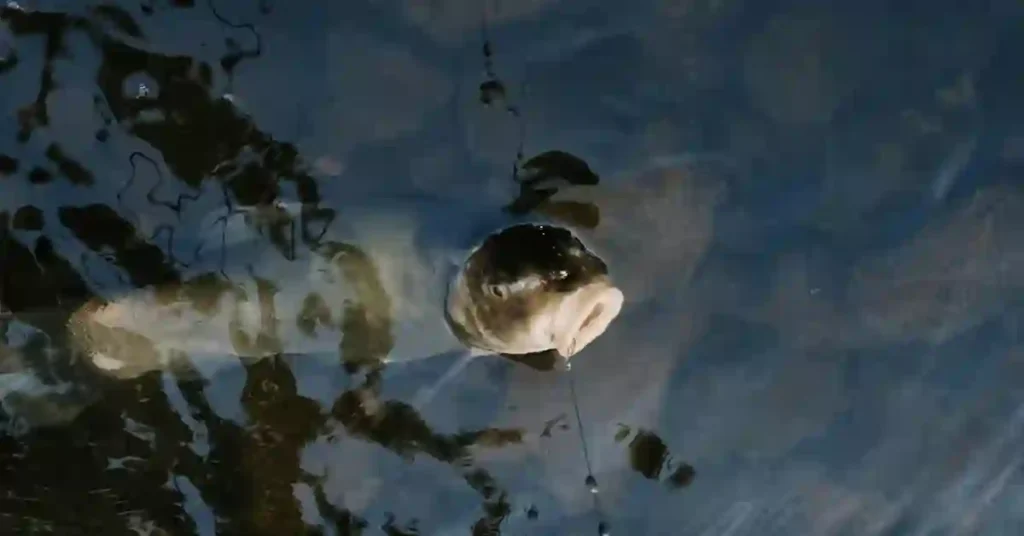
I’ll mention golf courses too. They usually have ponds with fish, but they might not allow fishing. If possible, get to know the ranger or greenskeepers. When I was in college, I worked at a golf course during the summer and had all the access I wanted. Food for thought.
Use Google Maps to look over your city, and you’ll find many ponds with fish. I love ponds on public land, usually in the woods.
What Species of Fish Live in Ponds?
Ponds are often associated with panfish, but most local ponds also have largemouth bass. In various fishing states, the most common combination of fish in ponds includes sunfish and largemouth bass. When I say “sunfish,” I mean panfish like bluegills, pumpkinseeds, green sunfish, and redear sunfish.
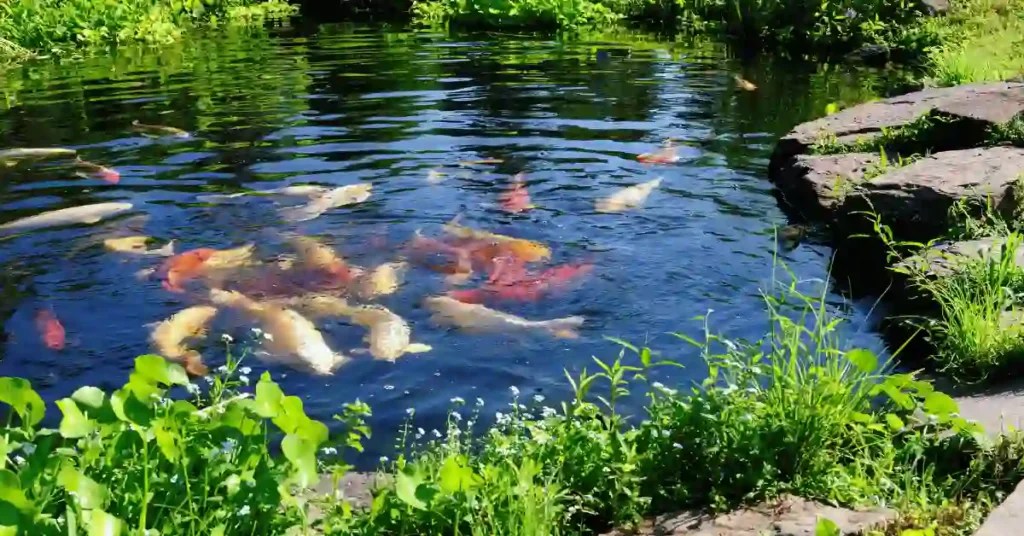
Common fish in ponds include all types of panfish, largemouth bass, and white crappie. Less common species include smallmouth bass, black crappie, and perch. White crappies adapt better to murkier water than black crappies.
If you’re into catching big pond fish, you might want to read about fly fishing for carp. Additionally, common grass carp can be found in ponds, especially on golf courses for some reason. Occasionally, you might spot koi in ponds, which are a type of carp and can be caught using similar methods.
While catfish and suckers thrive in ponds, they can be more challenging to catch with a fly. All these fish are considered warm water species.
Final Words
If you’re eager to dive into fly fishing but lack significant rivers or traditional fly-fishing spots nearby, fret not. You can still make the most of your fly line by heading to a local pond or lake. Just make sure to gear up your fly line for the target species, pay attention to your chosen depths, and leverage the nearly invisible appearance of your fly line to catch some impressive fish that even legendary anglers might find elusive.
I strongly encourage you to continually experiment with your approach. Through this process, you’ll uncover new methods and techniques, steadily evolving into a more skilled and accomplished fly angler.
Whether you’re on a business trip or enjoying leisure travel, don’t forget to pack your fly rod! This presents an excellent opportunity to explore new waters, as ponds are usually nearby. There’s a thrilling sense of adventure in discovering a previously unexplored body of water.

Meet Ibrahim Khan, an avid angler and author in Fishing Teach. He shares his wealth of knowledge from his 16 years of experiences in fishing. His articles are a captivating blend of practical insights and thrilling tales that invite readers into the enchanting world of fishing.
Ibrahim’s guides are your go-to guide in the realm of fishing on this informational site. Hailing from a coastal paradise, Ibrahim’s passion for angling is the heartbeat of his life.

